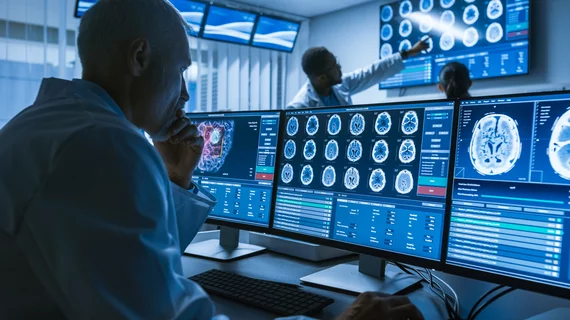Radiology department retools workflows to minimize disruptions from instant messaging
Instant messaging is a “viable clinical communication tool” in the radiology department, but one that can cause significant interruptions, if left unchecked, according to new research.
The University of Wisconsin School of Medicine recently implemented such a platform, hoping to cut back on other modes of communication in its reading room. Leaders shared their experiences in a study published March 1 in Clinical Imaging [1], highlighting how to make messaging work in other organizations.
“To address how non-image-interpretive tasks are handled in our clinical reading room, we successfully installed and deployed an instant message asynchronous communication system at our institution,” Cory S. Pierson, MD, a third-year radiology resident at UW-Madison, and co-authors wrote. “However, despite this success, our data demonstrate the potential tradeoffs incurred, with evidence that an instant messaging chat system also possesses the capacity to introduce a substantial number of interruptions into clinical workflows.”
The department first implemented the Webex instant messaging system from Cisco in July 2020. Pierson et al. analyzed data from communications sent between July and December 2021. Members of the imaging team sent 14,424 messages across 289 total shifts during the study period. Six fellows assigned to the main neuroradiology reading room sent 3,258 messages while receiving 10,260 such communications from technologists and other team members, the study found.
Radiologists experienced an average of 50 interruptions each shift when sorting the data by month or 52 interruptions, if separating by day of the week. To help address this, UW-Madison has created new workflows. Neuroradiology fellows and resident trainees are now “muted” to receiving messages from outside of their assigned work area. Reading room assistants also started triaging all communication in the system, assigning specific tasks to trainees to minimize the burden of constantly monitoring messages.
“While anecdotal feedback to this new system has been overwhelmingly positive, the overall process remains under iterative refinement and development,” Pierson and co-authors noted. “Overall, we anticipate that this system will more equally distribute the work of completing [non-image-interpretive tasks] and limit task-switching by both the trainees and attending radiologists, leading to increased workplace efficiency, improved trainee education and more effective image interpretation.”
Read more about the study’s results, including potential limitations, at the link below.

